Content optimization tools make writing and ranking top-quality content a whole lot easier. That goes double for the latest generation of AI-powered tools.
Great optimization tools can identify missing topics and keywords, suggest and refine headers and titles, generate meta-data, and show tons of useful information about your competitors’ articles. If you aren’t using an optimization tool, you probably should.
I work at Ahrefs, and we make an AI content optimization tool called AI Content Helper. I think it’s the best in the market (I really do: I even make feature suggestions based on the experiences of our content team).
But that does make me biased. So to help you pick the best tool for your needs, I also asked the teams behind three other popular optimization tools—Surfer, Clearscope, and Frase—to explain what makes their tools unique.
Do optimization tools actually work?
If you’re wondering whether content optimization tools are worth the hype, here’s Louise from our blog team adding 65% traffic to an article using our content optimization tool, AI Content Helper. They work!
I’ve optimized hundreds of articles over the years, and used half a dozen different tools. From my experience, there are a few core features that every tool needs to include:
Content scoring
By scoring or grading how well your articles are optimized (usually from 0-100, or from A-E), you can make it much easier to understand and improve the search rankings of all your content.
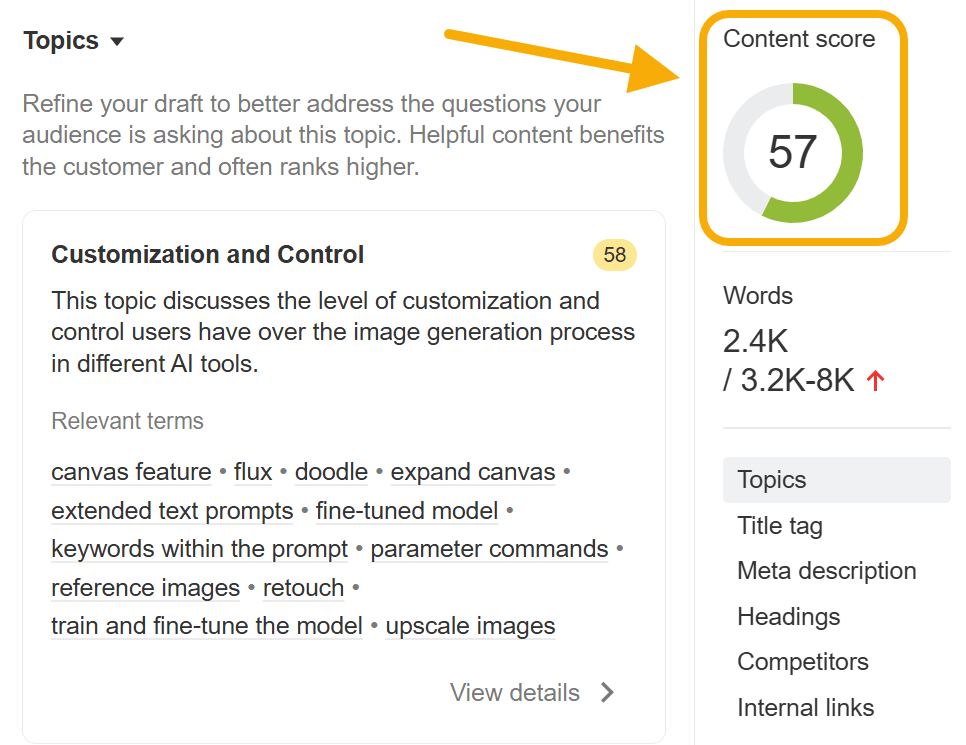
57 content score, not great, not terrible.
If your article scores a lowly 30 in a SERP full of 70+ articles, you’ll probably benefit from adding in some missing sub-topics or making the post more detailed. Generating content scores for all of your blog posts makes it easy to quickly see which articles are due a content refresh.
And as an extra plus, content scoring makes it much easier to talk about SEO in terms other people in your company understand—like your boss, or your CMO. It’s one of the reasons many bigger companies use content scores as part of their KPIs (like aiming to optimize every article to 80 or greater).
User-friendly content editor
If you’re going to be writing and editing content directly in your content optimization tool, you’ll need a decent content editor that lets you format and style your writing.
(And even better if your content score increases in real-time with the text changes you make.)
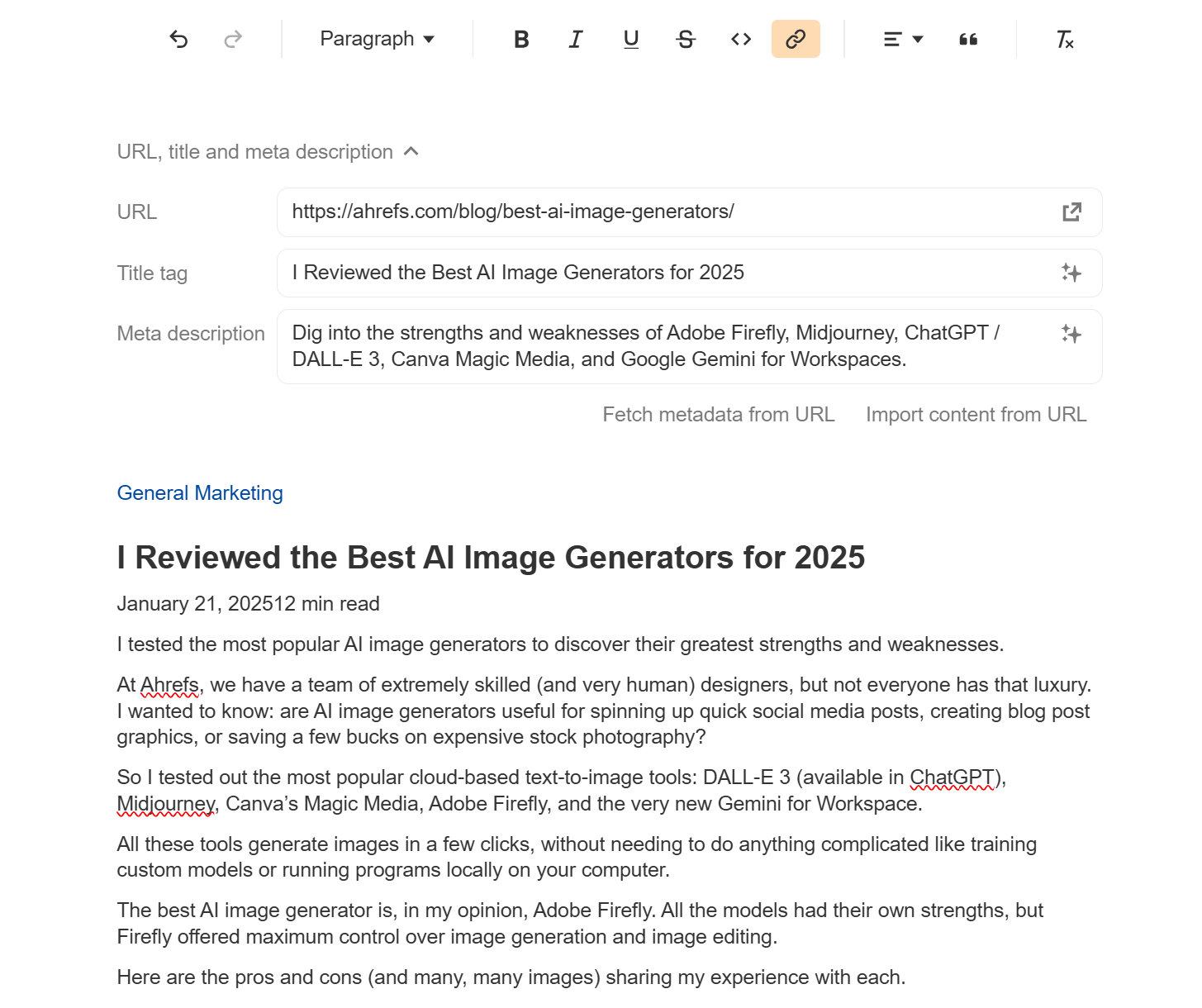
Here’s the content editor in AI Content Helper. Clean!
AI (used in useful ways)
It’s a given that modern content optimization tools use AI—in the form of natural language processing (NLP) and machine learning—for topic analysis and content scoring.
But with the explosion of generative AI onto the scene, it’s also worth looking for other AI features to speed-up your content workflow. Some tools can use AI to help you:
- Automatically suggest ideas for titles, headers, and meta descriptions.
- Fix your spelling and grammar as you write.
- Shorten, lengthen, and otherwise improve your writing.
In AI Content Helper, you can highlight any section of text and ask the AI assistant for help:
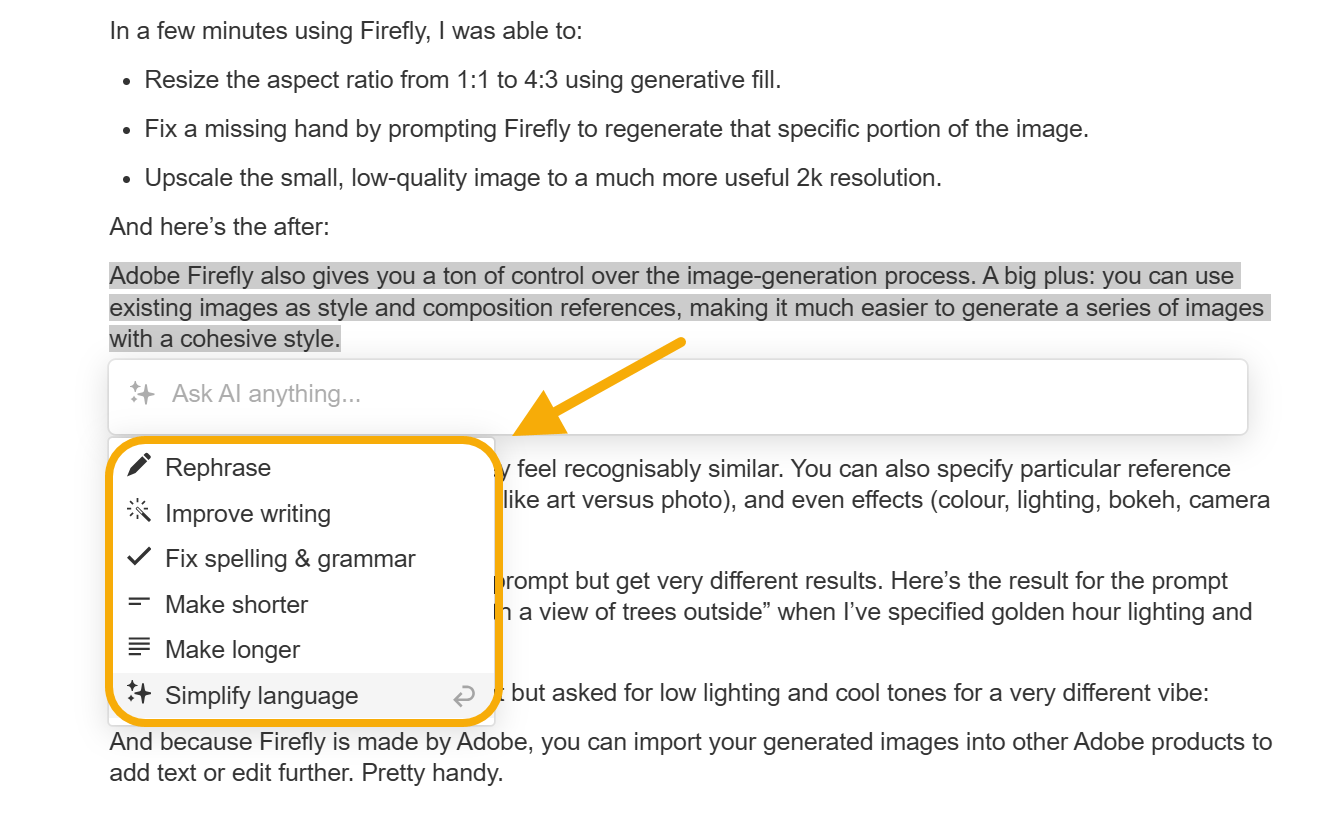
Competitor data
The best optimization tools also include information about your competitors’ content, too. At the minimum, it’s helpful to see a content score for the top-ranking articles in the SERP for your target keyword.
But beyond that, understanding how long the top-ranking articles are, or how their headers are structured, or even how many referring domains they have, can help you decide how much effort will be required to (hopefully) knock them from the top spot.
Here’s AI Content Helper showing a content score, word count, referring domains and domain rating for competitor articles—with the option to see even more information whenever you want:
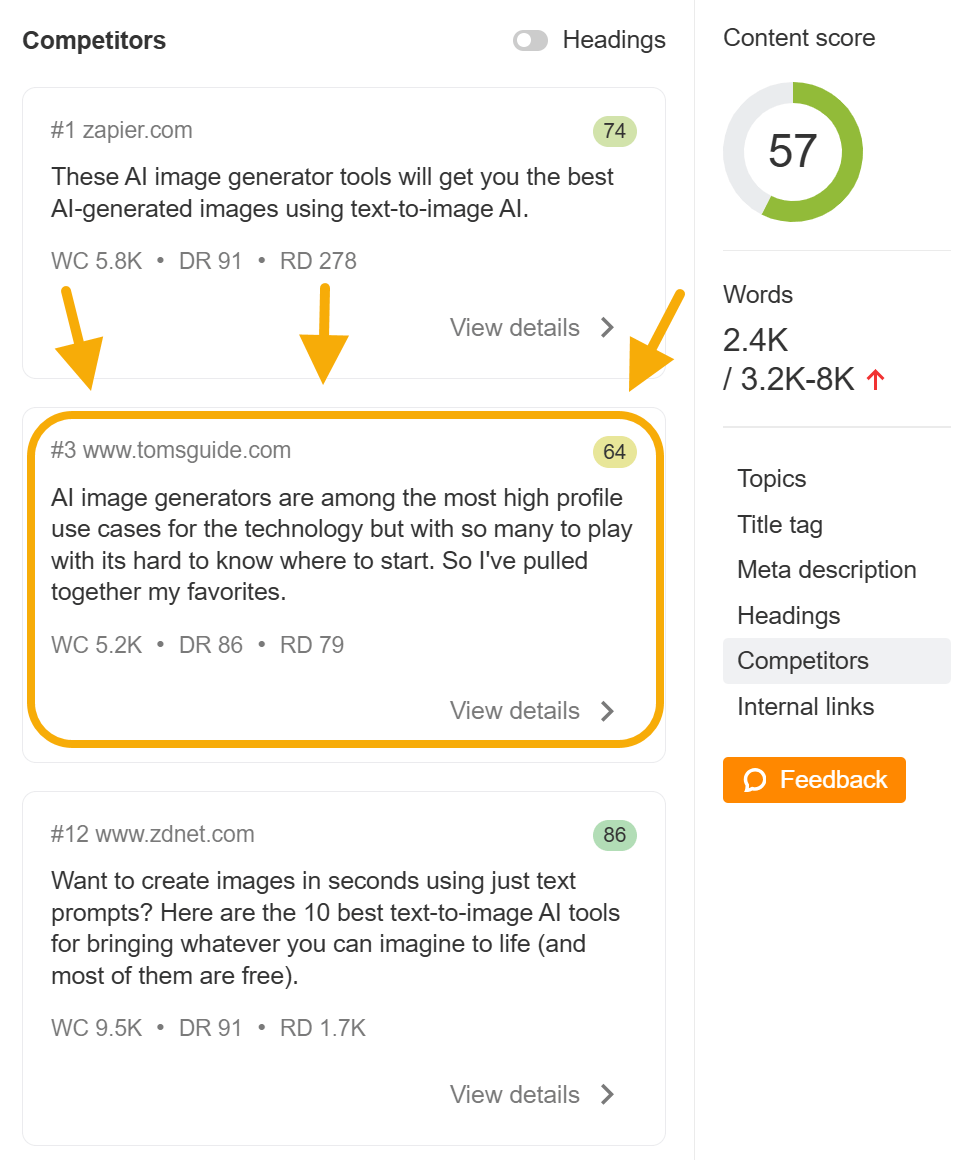
Better rankings
When we studied the correlation between rankings and content scores for four popular optimization tools, we found weak correlations all around.
That might not sound very impressive, but even a weak positive correlation is pretty helpful. Our study suggests that optimizing on-page text does genuinely improve ranking performance, at least by a little.
Considering that Google uses tons of ranking factors in all manner of complicated ways, it’s pretty great that something we control can improve performance.
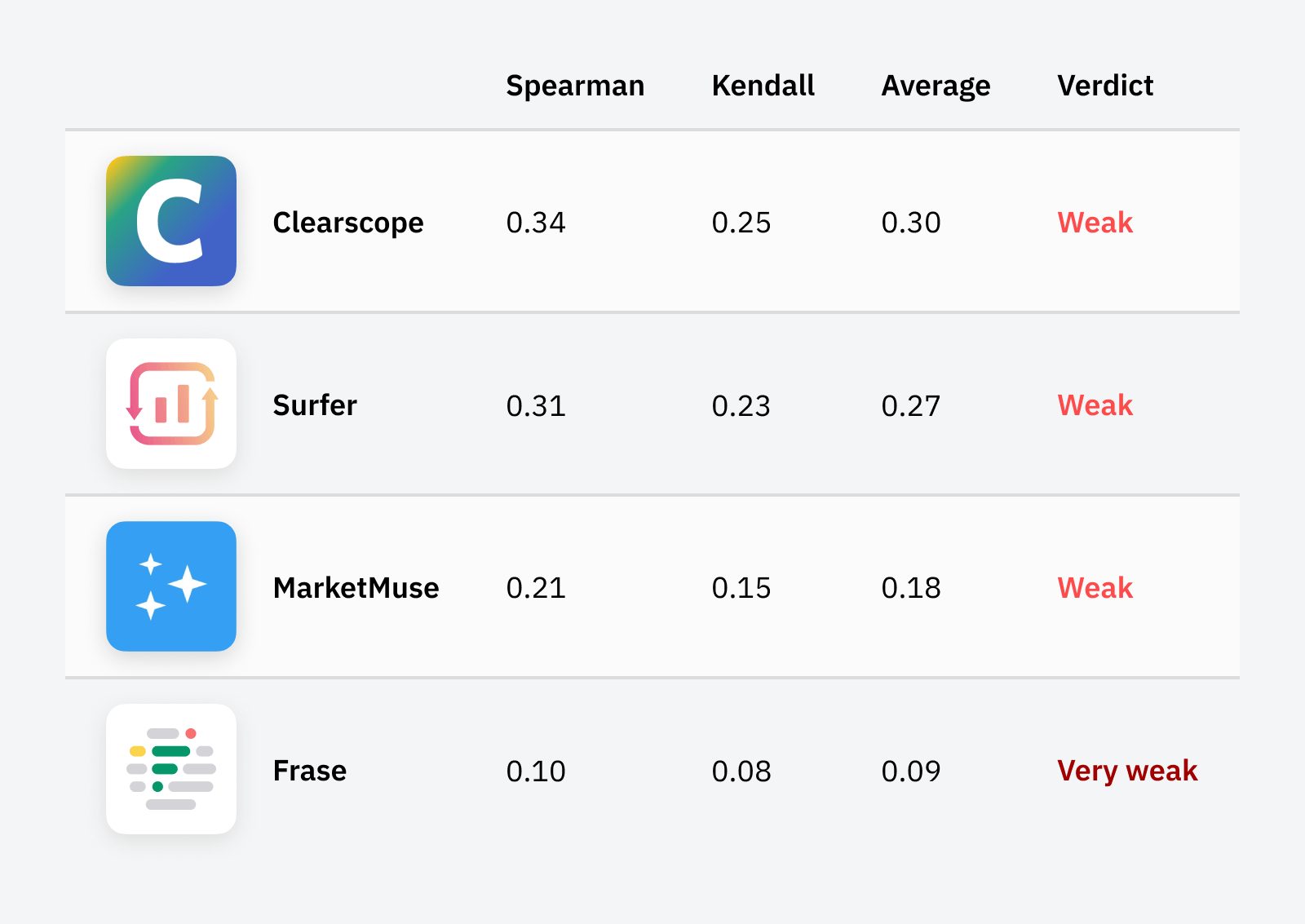
Obviously, correlation is causation, and you will be the best judge of how helpful a content optimization tool is for actually improving your rankings.
Workflow integration
Lastly, depending on your team size and editorial process, you might need some combination of:
- Shareable links to the reports you generate.
- Different permissions settings, for freelance writers versus managing editors, for example.
- CMS integration, so you can publish straight to your website in a few clicks.
With that shopping list in mind, let’s look at the best AI content optimization tools on the market:
AI Content Helper is the content optimization tool I always dreamed of using. (I put a ⭐ next to the name to help you remember it. #Marketing.)
It helps me optimize my content without stuffing random keywords everywhere. It contains a ton of SEO and competitor data, so I can make smart choices about length and topic coverage. And it’s part of Ahrefs, the SEO and marketing platform I already use, all day, every day.
While it’s in beta, AI Content Helper is free for all Ahrefs customers, and will become a paid add-on when it leaves beta.
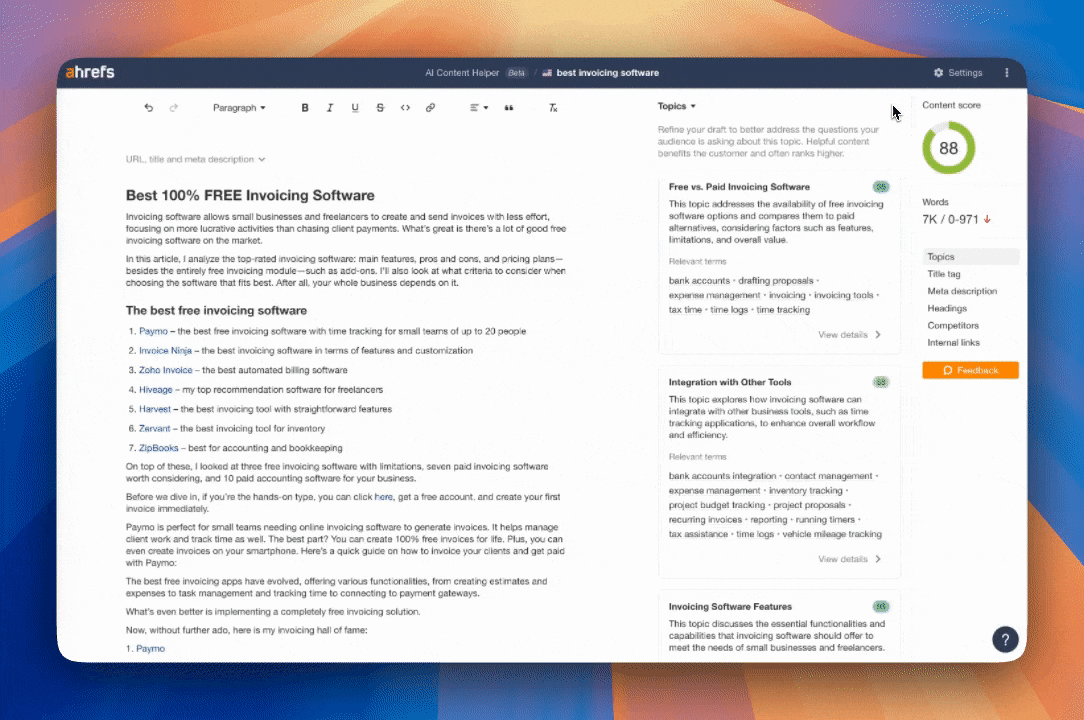
What are AI Content Helper’s greatest strengths?
Here’s how AI Content Helper is different:
- Tons of competitor intel in one place. See how the top-ranking articles have structured their articles and written their paragraphs, with access to the full HTML of each competing page, right there in the interface.
- Smart AI helper. Ask AI to shorten sentences, rephrase awkward turns of phrase, and bust you out of writer’s block.
- Choose the intent you want to optimize for. Many SERPs contain multiple intents, so AI Content Helper lets you pick the exact articles you want to compare with (no more comparing your blog post with those pesky landing pages in the SERP).
- One tool for the entire content workflow. With one Ahrefs subscription, you can research your competitors, build and cluster your keyword list, draft and optimize amazing content, and report on its rankings, traffic and backlinks, all without juggling half a dozen different tools.
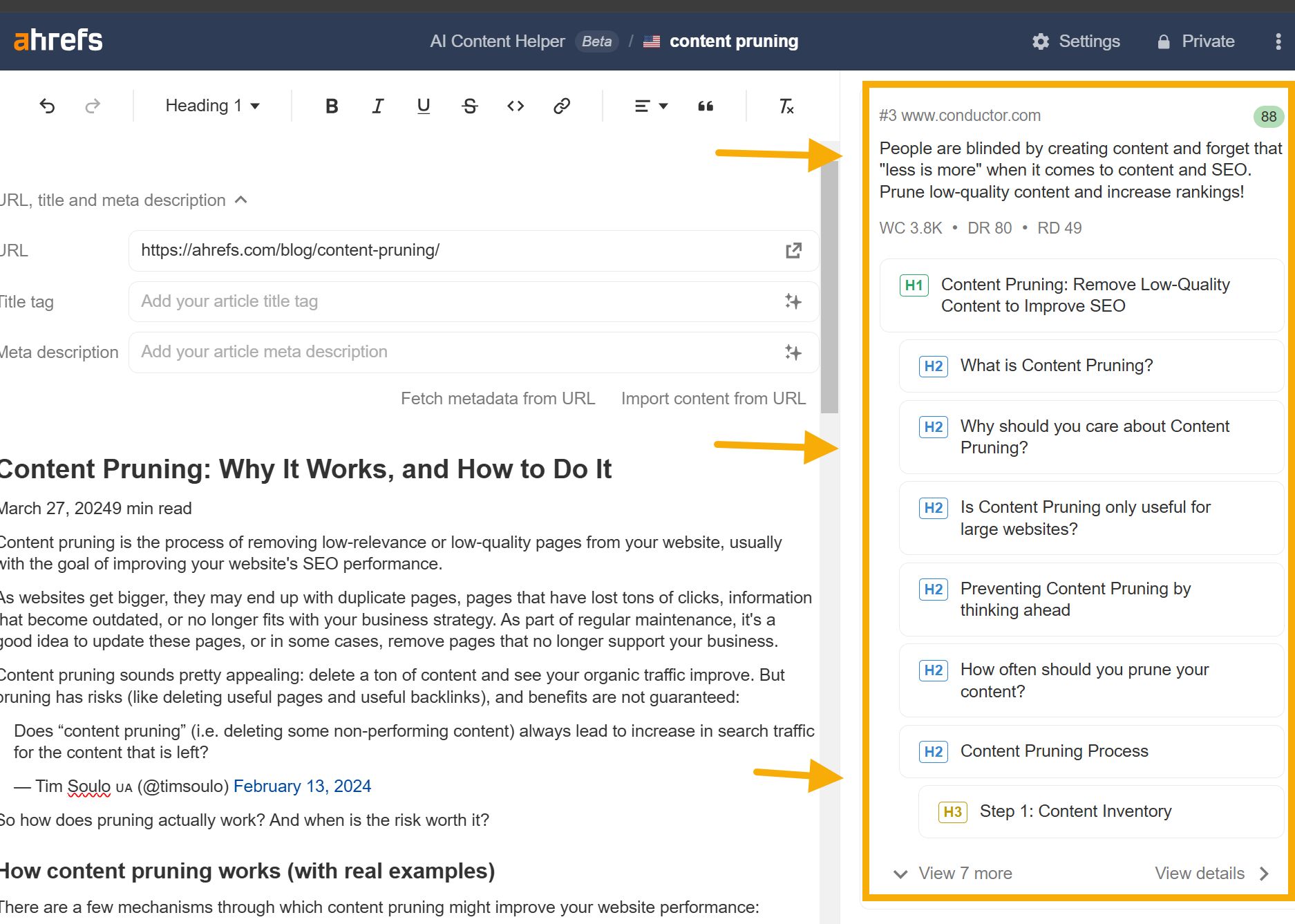
See how your competitors’ articles are written, right from your content editor.
How is AI Content Helper different from other tools?
We want to help you make the best possible resource, not something that was just stuffed full of keywords. (Especially now that Google is cracking down on over-optimized content that is created just for SEO purposes.)
So instead of focusing solely on keyword optimization, AI Content Helper focuses on topic optimization.
The goal is not keyword density, but comprehensive content coverage—making sure you cover all the information your readers need to answer their questions. (And unlike other tools, you can’t game our content score by cramming keywords in your headers).
We think this makes for better, more value-added content that’s more closely aligned with what both readers and Google want.
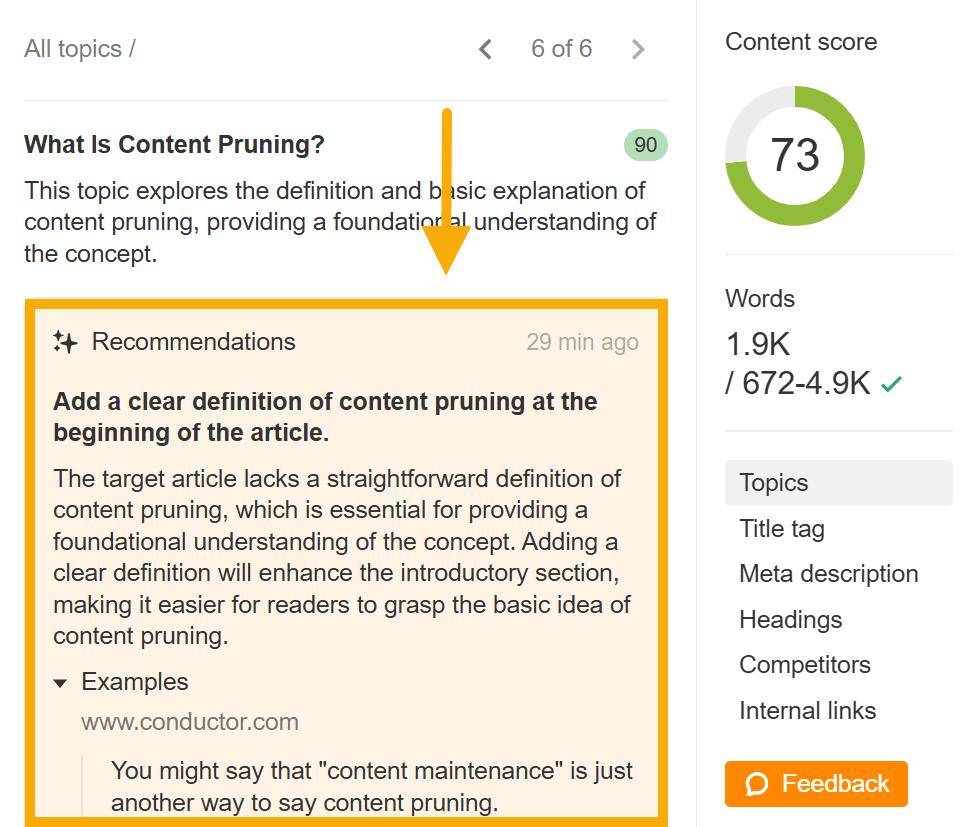
Identify topic gaps and get smart recommendations for how to cover them.
Any exciting features coming soon?
Tons! Here’s what the team is working on, literally as I write this article:
- AI chat. Improve your article with the help of an integrated AI assistant in a simple chat interface (like Copilot or ChatGPT Canvas).
- Automated internal linking. Recommend the best published pages to include in your current article draft.
- User permissions. Advanced user permissions for bigger content teams and complex content workflows.
- Detailed competitor insights. Study competitor insights in areas where they’re winning.
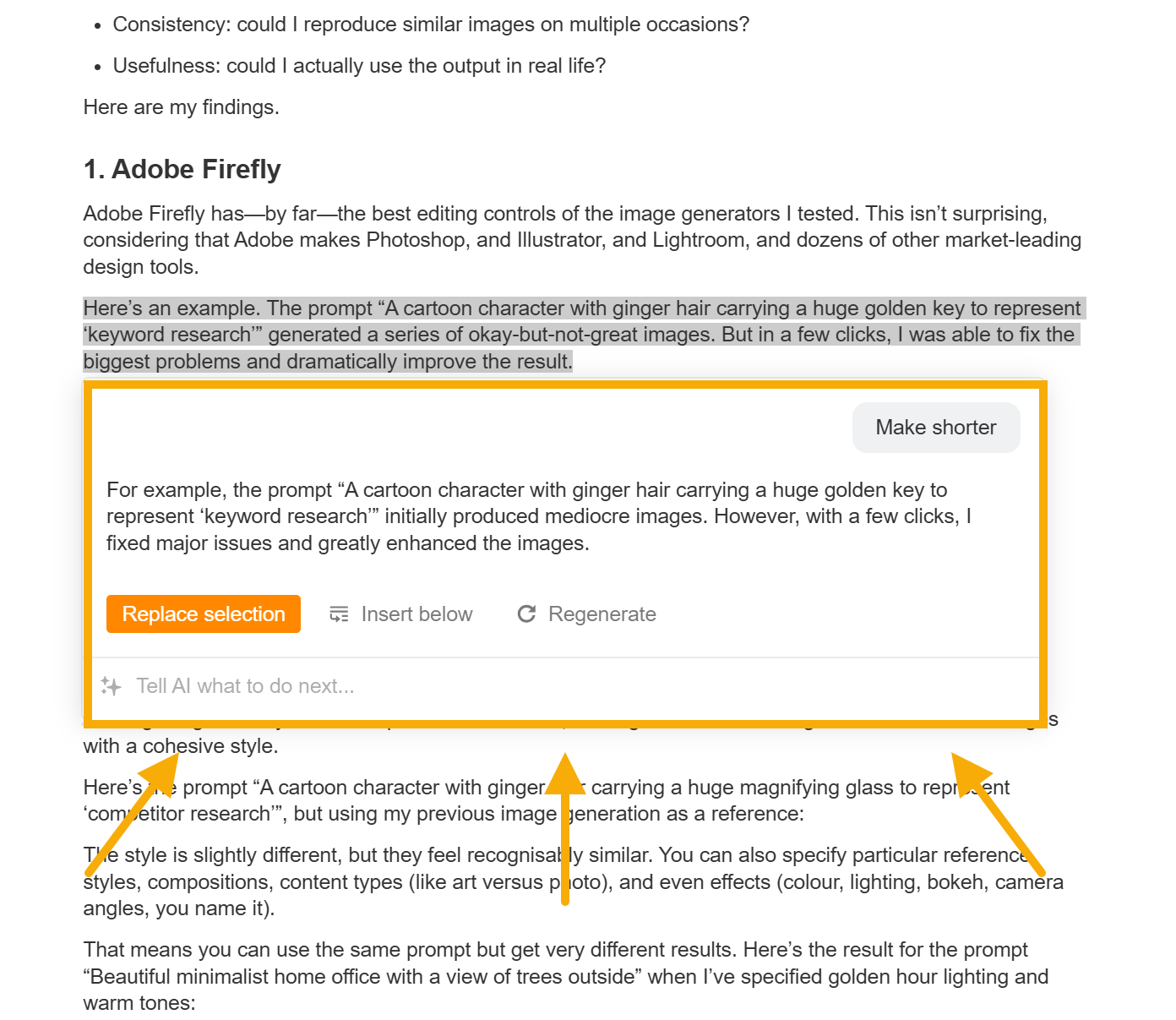
Ask AI for help with any word or paragraph in your article.
Here’s Surfer’s CMO and co-founder Tomasz Niezgoda:
What are Surfer’s greatest strengths?
We built Surfer to automate our own everyday work, which is why we’ve always focused on what truly matters to users. No copying competitors or chasing trends—just solving real, day-to-day problems.
I’m especially proud of three things: our commitment to constantly refining the UX, creating innovative solutions to real problems, and automating top-notch recommendations that are safe to use. Plus, according to review sites, we’ve got the best live support in the category.
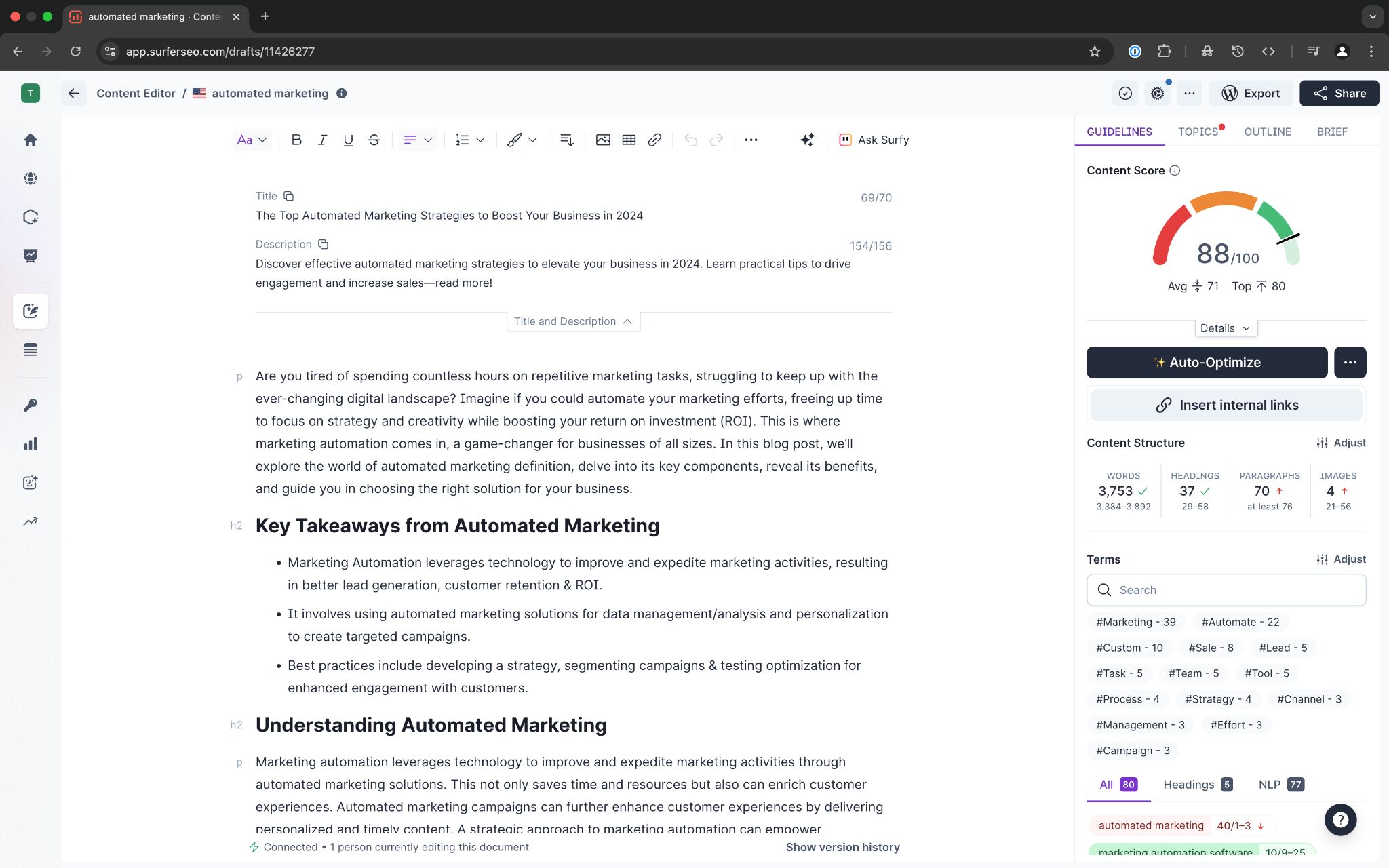
How is Surfer different from other tools?
Surfer is more than an optimization tool—it’s a complete platform that brings together research, creation, optimization, collaboration, and performance tracking in one place. With Surfer, you’re never stuck in silos—you’ll know exactly which topics to cover, how your content is performing, what to improve, and seamlessly collaborate using the tools you already rely on, thanks to a variety of integrations.
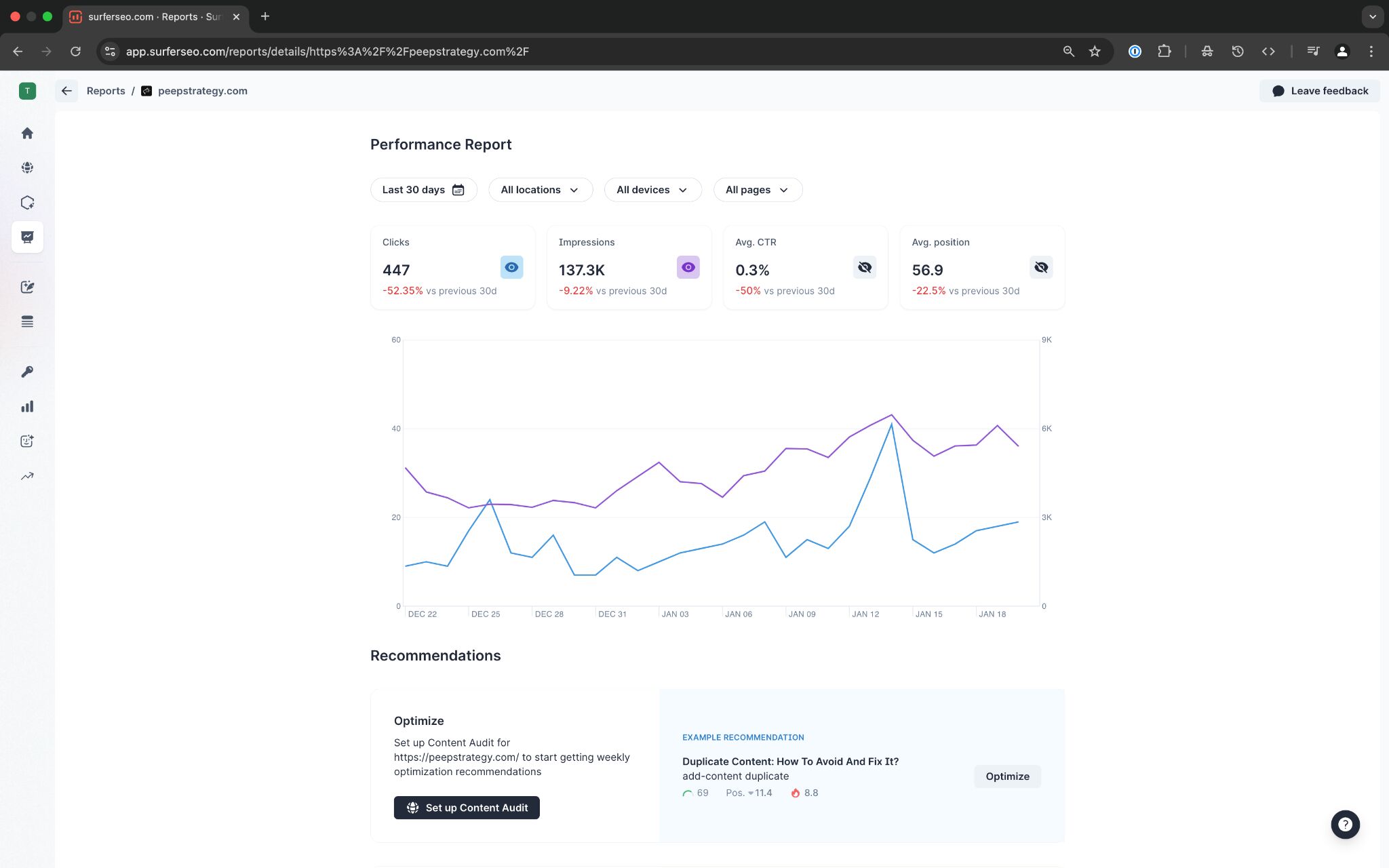
Any exciting features coming soon?
Topical Authority Score—the first of its kind. It helps users identify which topics can boost their rankings (in other words, which topics build “authority” and how to grow it). There’s a deep science behind it that ensures users focus only on what truly moves the needle, without having to blindly cover every topic.
The second goes beyond SEO, and will allow users to create any type of content for any platform with a predefined style that actually works (not just claims to, like most solutions out there as of today). We’re bullish for 2025!
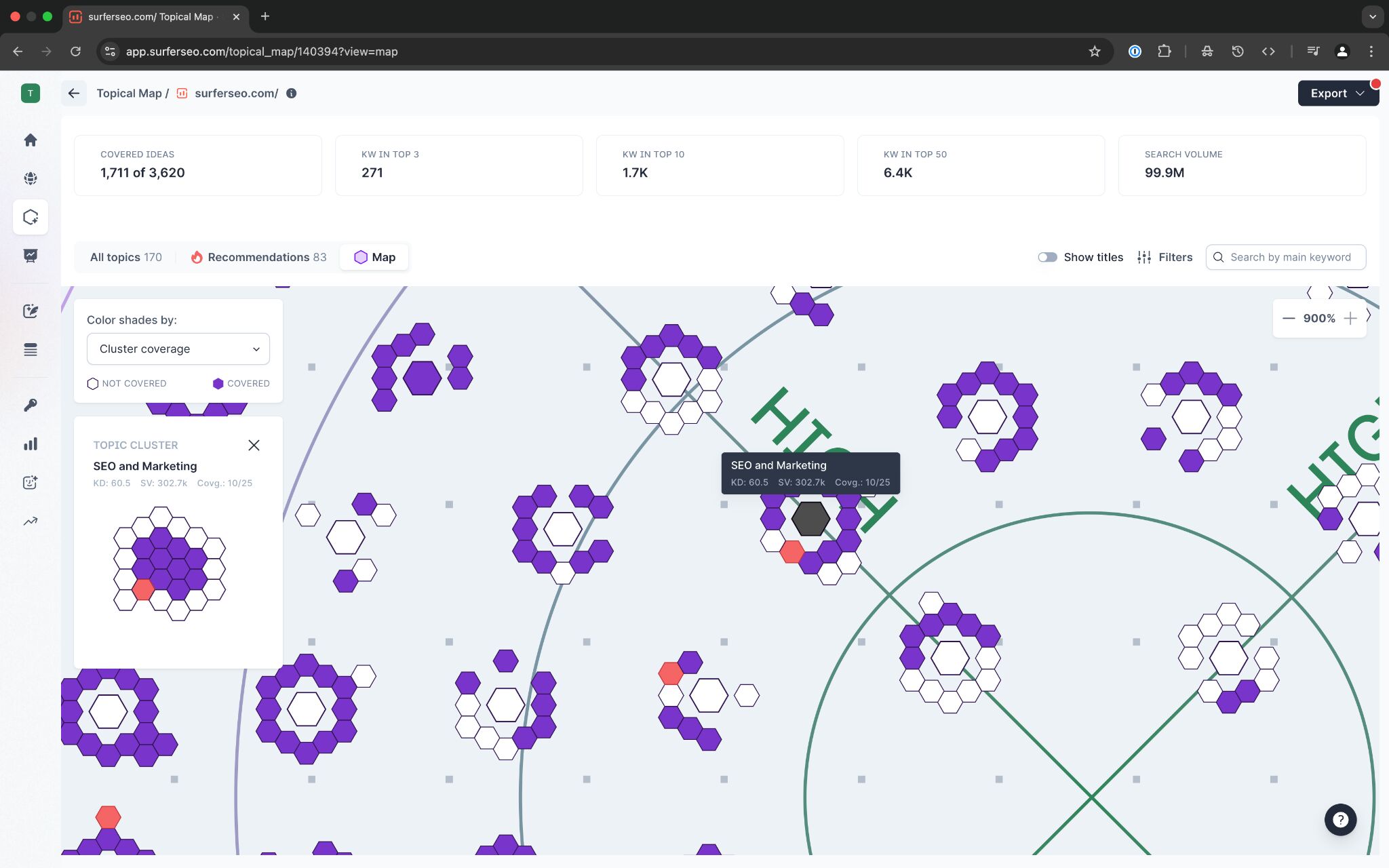
Here’s Matt Hurley, General Manager of Frase:
What are Frase’s greatest strengths?
Frase excels at simplifying and automating content creation and optimization. Its greatest strengths include:
- End-to-end SEO workflow: Frase helps users move from research to writing to optimization all in one platform. It streamlines the process of creating high-quality, SEO-friendly content.
- Competitive analysis and insights: Frase’s tools audit, evaluate, and prioritize content opportunities automatically, leveraging insights from the SERP and competitors.
- AI-powered content creation: with OpenAI’s 4o model integrated, Frase generates content that’s optimized for user intent and keyword targeting.
- Customizable tools for efficiency: features like the Outline Builder and Automatic Content Briefs allow users to build structured content plans in minutes, saving hours of manual work.
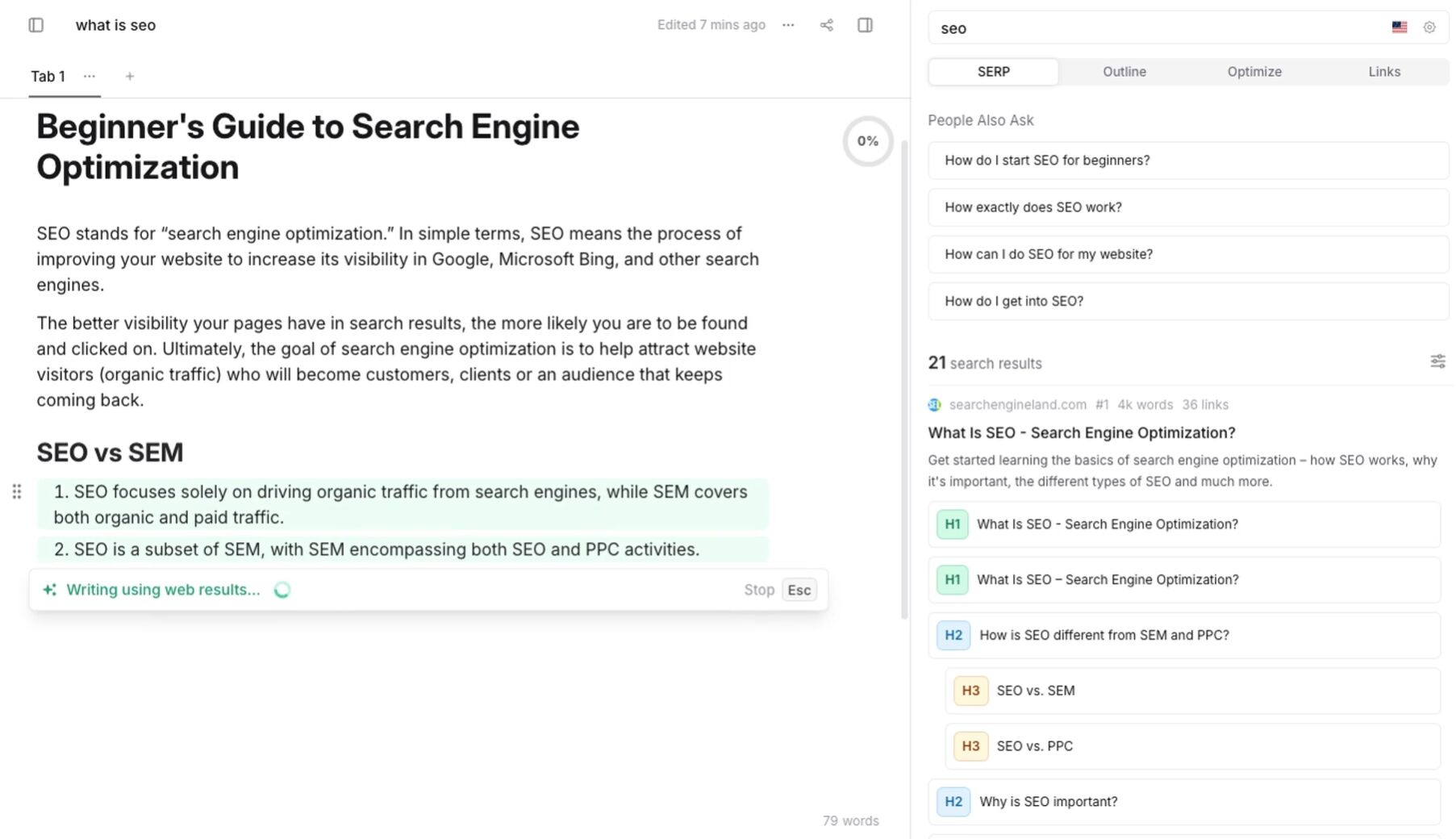
How is Frase different from other tools?
- Integrated SEO and content creation: unlike many tools that specialize in either SEO analysis or writing, Frase combines both, enabling users to optimize content while writing it.
- AI article agent: Frase’s AI Article Agent simplifies the process of creating high-quality, SEO-ready articles. With just a few inputs, users can generate structured, optimized content that’s ready for publication.
- Content optimization powered by proprietary analysis: Frase’s proprietary topic modeling ensures content aligns with what search engines value most.
- Flexibility for all workflows: whether you need help drafting, outlining, or editing, Frase adapts to support different workflows, making it valuable for a range of users, from freelancers to agencies.
- Multilingual support: Frase supports multiple languages, making it accessible for global teams.
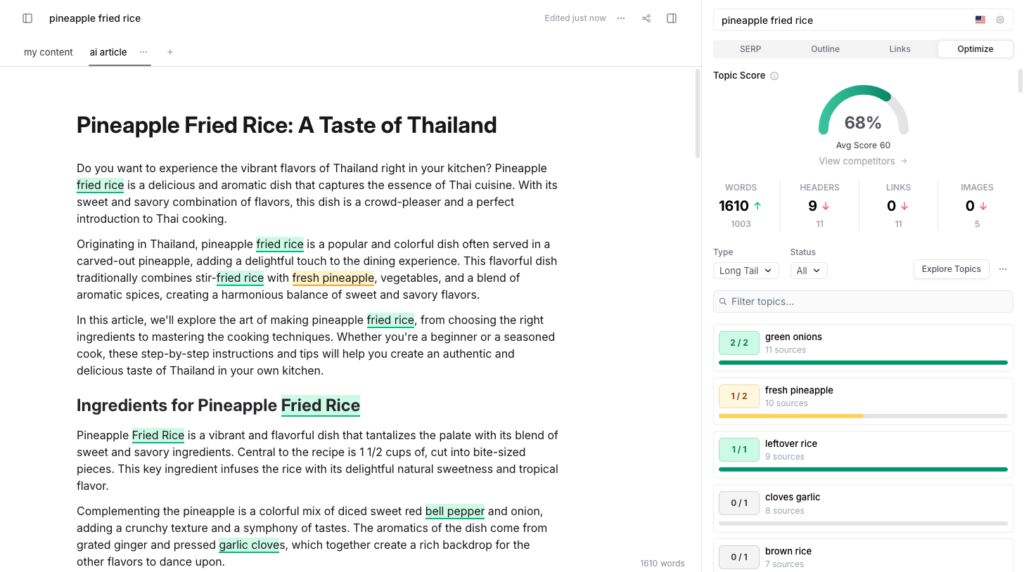
Any exciting features coming soon?
- Governance tools: Frase is introducing governance features to ensure consistent, high-quality content creation, including a style guide, terms management glossary, and brand tone enforcement.
- Knowledge hub: a centralized repository for internal data, insights, and specs, enabling teams to leverage this info during the content generation process, making their generated content more original, insightful, and valuable to their readers.
- Answer engine: Frase’s upcoming Answer Engine will connect your content strategy to your visitor experience. It identifies gaps in your site’s information based on user queries and helps you fill them with relevant content.
- Pay for what you need: Frase is introducing a flexible, usage-based model for their AI Article Agent that allows users to pay only for what they need.

Here’s Kevin Su, Founder/CTO, Clearscope:
What are Clearscope’s greatest strengths?
We delight our customers with better results and a better experience than they expect. That reflects in a number of places, notably:
- We’ve built an easy-to-use UI that stays focused on creating high-quality content.
- We’ve spent years obsessing over our recommendation algorithms to minimize noise and maximize performance.
- We’ve offered tailored onboardings and strategy sessions since day one to make sure every customer has support towards meeting their goals.
Put together, we’ve built an experience that turns our customers into champions. That lets us move from conversations like “Is this going to help me?” to “How do I get started?”
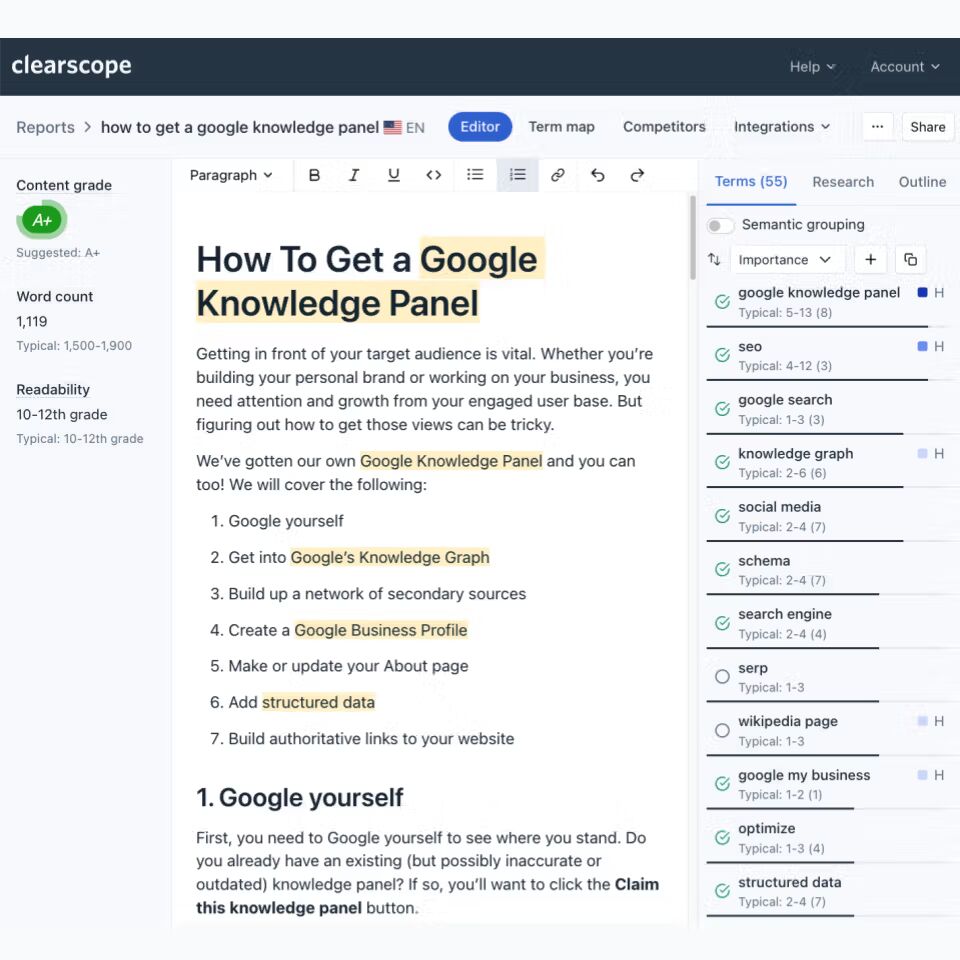
How is Clearscope different from other tools?
SEO tools have this uncanny tendency to expand into all-in-one tools (no shade at Ahrefs!). Clearscope grew up during the era of “content is king” and we’ve stayed firmly focused on serving content teams ever since.
That’s afforded us the ability to offer a simpler and friendlier experience within a broader SEO space that can be complicated and overwhelming.
It also allows us to spare no expense on our core competencies. We use the most advanced and expensive Machine Learning and LLM services to build our recommendations engine because it’s what we do, not one of 37 “features” we have.
Finally, our focus means our team understands content. Our customers appreciate that we can engage with them about their content strategy, and we have tools we can use to help them find success.
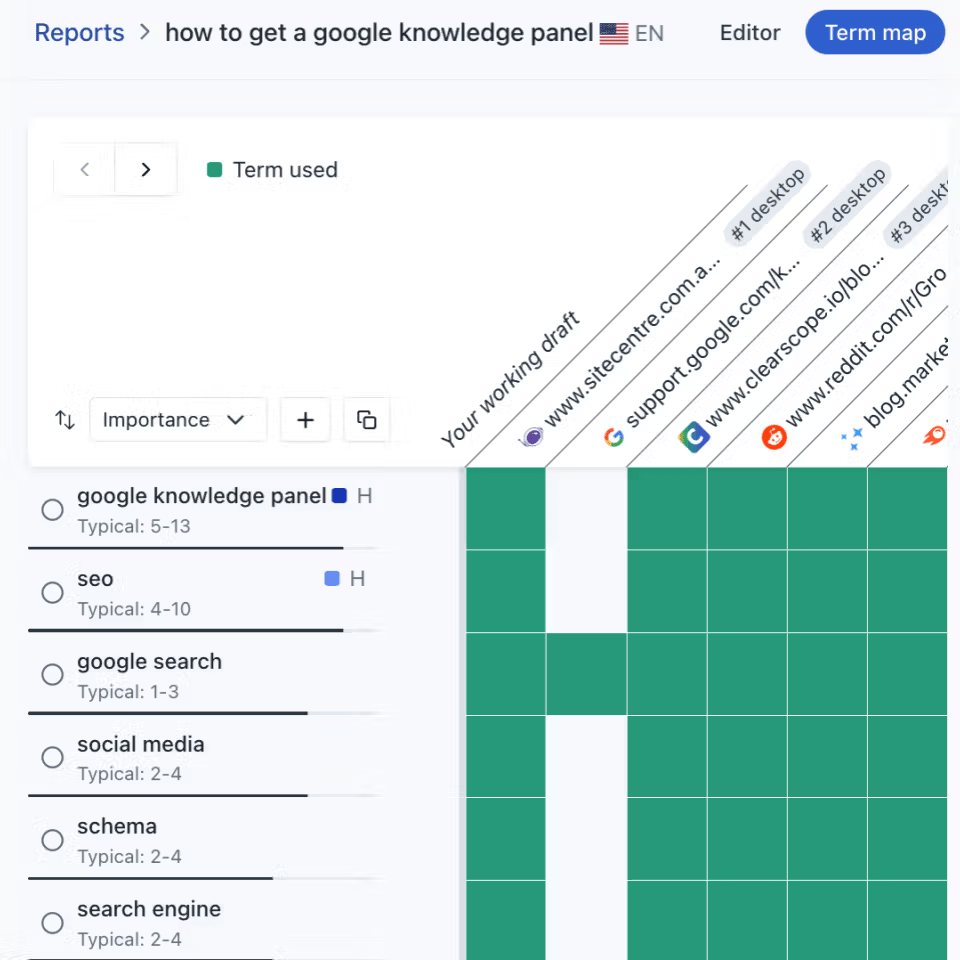
Any exciting features coming soon?
We’re very excited about the increasing potential of LLMs beyond their use in our recommendations engine, but we also want to be thoughtful about it.
We’re not in the business of spinning up 500 generic articles as part of a spray-and-pray approach. Instead, we’re looking to apply LLMs to our core competencies of both understanding the SERPs and our customers’ own content inventories to add value.
Imagine being able to ask us: “Come up with 3 article ideas based on filling gaps from our last 50 blog posts”, or “Write a 10-bullet outline about ‘why does DeepSeek matter’ with a unique angle that can’t be found in the top 10 results”
That’s what we’re looking towards next.
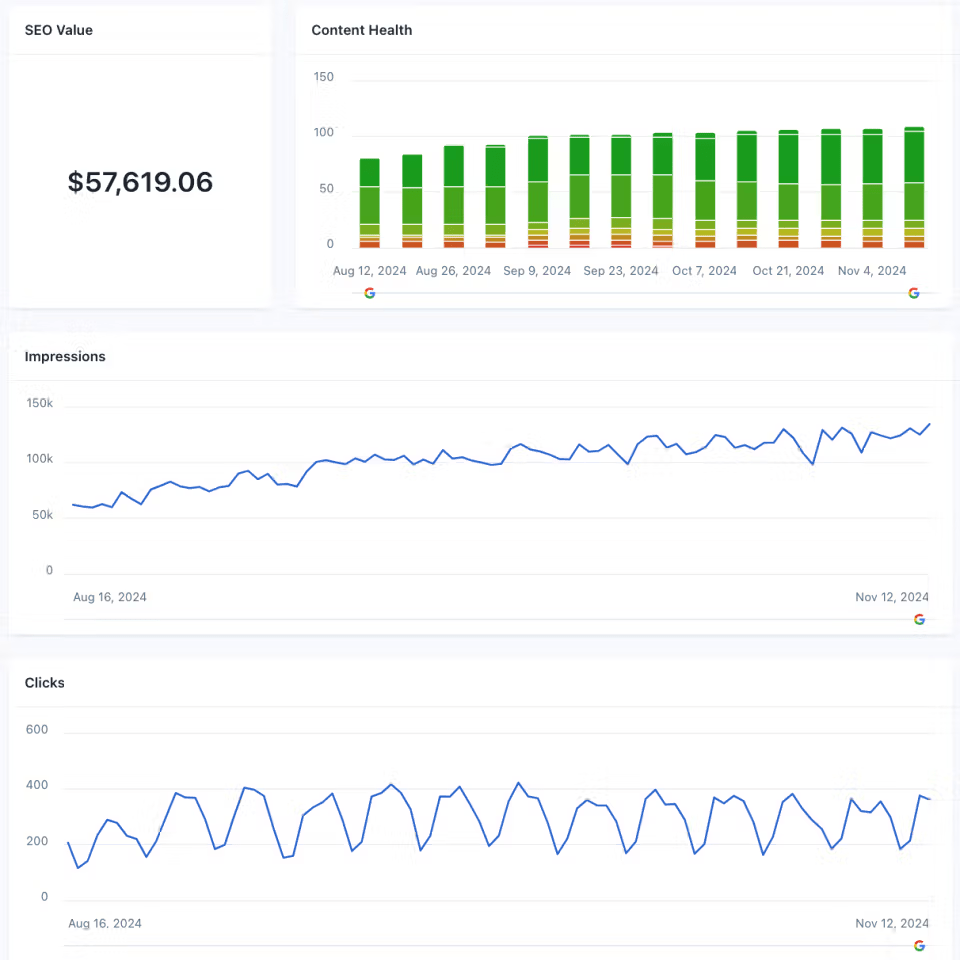
Final thoughts
If you want to check out AI Content Helper, it’s currently free for all Ahrefs customers. When it leaves beta, it will become a paid add-on.
Learn more about AI Content Helper right here, or click here to go straight to the tool and try it for yourself.




